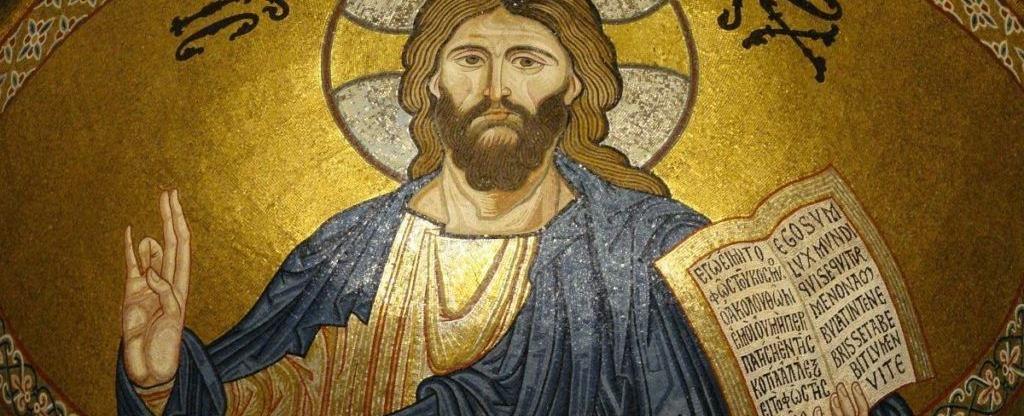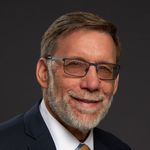Revisiting the Threefold Office of Christ in the Church

One of the most significant contributions of the Second Vatican Council lay in its appropriation of the tria munera—that is the threefold office of Christ as priest, prophet, and king—as an architectonic structure for reflection on the church. The council was heavily influenced by the work of Yves Congar, an influential council peritus who, in his groundbreaking work on the laity,[1] reclaimed a more ancient ecclesial vision. Following Congar, the council taught that the whole church, in some sense, participated in the threefold office of Christ (LG 10–13, 31, AA 2).
By associating the tria munera with Christian baptism, the council sought to move the church beyond Pope Pius X’s societas inequalis theology[2] that had defined the church in terms of two different and hierarchically ordered ranks, the pastors and the laity. First, Vatican II taught that all Christians, by baptism, share in the priesthood of Christ even as it affirmed the ministerial priesthood’s distinctive participation in Christ’s priesthood (LG 10). Second, it taught that all the baptized also share in Christ’s prophetic office through the exercise of the sensus fidei (LG 12) while continuing to affirm the formal teaching authority of the bishops. Finally, according to the council, the bishops exercised the office of Christ as king, not as ruler but as shepherds. Unfortunately, here the council was much less successful in exploring the proper participation of all the baptized in Christ’s kingly office.
Many scholars have noted that the approach of both Congar and the council was a departure from the later work of John Henry Newman, who in the famous Preface to the Third Edition of the Via Media of the Anglican Church, published in 1877, had assigned the three offices of Christ to different sectors of the church.[3] Newman located the priestly function of the church in the activity of priest and the laity in church worship, the prophetic function in the schola theologorum, and the “regal” function in the ministry of the bishops and especially the pope. This schema represented the most mature configuration of Newman’s ecclesiology. Yet, even though Pope Paul VI had once characterized Vatican II as “Newman’s Council,” Avery Dulles warned that Newman’s “division of powers among bishops, theologians, and the laity is not easily assimilable [sic] today. His position, moreover, can scarcely be reconciled with the Second Vatican Council.”[4] Dulles appeared to suggest that Newman’s schematization of the tria munera no longer had much to offer the post-conciliar church. But is that true? I argue that the pontificate of Pope Francis offers a masterful synthesis of insights found in both Newman’s and the council’s respective considerations of the tria munera.
First of all, as Ryan Marr has pointed out in his perceptive analysis of Newman’s ecclesiology, it is not clear that Newman ever really repudiated the conviction that all the baptized participate in the threefold office.[5] Earlier in his career Newman affirmed that “all His followers in some sense bear all three offices.”[6] His presentation of the tria munera was simply responding to the pressing ecclesial challenges of his time.
In fact, Newman’s consideration of the sacerdotal office clearly prefigured certain elements of the council’s teaching. For Newman, the sacerdotal office was not limited to priests but was exercised by both priest and people, primarily in the life of worship and religious devotion. Here we can see an anticipation of Vatican II’s teaching in Sacrosanctum Concilium that the liturgy was not a strictly clerical affair but an exercise in the worship of the whole gathered people of God under the presidency of a bishop or his presbyteral representative. This teaching has been given new force in Francis’s own denunciation of clericalism. We see it as well in his motu proprio, Magnum principium, which insisted that the work of liturgical translation should be concerned not only with fidelity to the Latin text, but also fidelity to the language in which the text would be translated and to the comprehension of the worshipping community.
Unfortunately, under both Pope John Paul II and Pope Benedict XVI, the council’s balanced treatment of the relationship between the baptismal priesthood and the ministerial priesthood tilted in one direction, toward a dramatic resacralization of the ministerial priesthood. The intent was to preserve a sharp ontological divide between the laity’s exercise of its baptismal priesthood and the ministerial priesthood. Pope Francis, however, has largely avoided this resacralization of the priesthood and stressed instead the role of the priest as one called to serve and enable the exercise of the baptismal priesthood.
Newman’s location of the prophetic office in the work of theologians was in part a response to the ultramontanist tendencies of his time, wherein someone like William George Ward could wish for a new papal bull every morning with his newspaper! Those ultramontane tendencies continued long after Newman’s death. Indeed, one could argue that they achieved their apotheosis in the papacy of John Paul II. In his pontificate the pope had become, in many ways, the “chief theologian” of the church.[7] Yet again, Pope Francis has moved the church in a quite different direction, insisting that it was not the task of the papal magisterium to respond to every question that emerges in the church today (EG 16).
For Newman, the church’s profound dependence on divine revelation led him to give a limited priority to the prophetic office exercised by theologians. Although Vatican II had some encouraging things to say about the work of theologians, that contribution was left relatively undeveloped. However, in the early decades after the council there were promising signs that Newman’s expansive consideration of the prophetic office of the schola theologorum would receive a fresh reaffirmation. For example, Pope Paul VI created the International Theological Commission. Unfortunately, during the successive pontificates of John Paul II and Benedict XVI a climate of fear grew in many quarters of the theological community as scholars were often subject to censure for critically engaging certain non-dogmatic magisterial pronouncements.
On the one hand, Pope Francis has spent relatively little time considering the vocation of the theologian. On the other hand, it is clear that, like Newman, he sees them as exercising a vital role in the life of the church. In fact, for Francis, the prophetic work of theologians is not limited to their interpretation of divine revelation and their role in the authentic development of doctrine. Francis locates the prophetic character of the theological vocation in a dialogue with the world conducted on the peripheries. There theologians are called to discern the signs of the times, as is outlined in his address to the International Theological Commission:
Theologians, then, are “pioneers . . . in the Church’s dialogue with cultures. But being pioneers is important also because sometimes we think they [theologians] stay back, stay in the barracks . . . No, they are on the frontier! This dialogue of the Church with cultures is a dialogue at once critical and benevolent, which must foster the reception of the Word of God by people “from every nation, from all tribes and peoples and tongues” (Rev 7:9).
Francis has also proven more open than his predecessors were to allowing theologians to struggle with pressing doctrinal questions; he feels little need to penalize those who take positions at odds with current official church teaching.
Francis has also followed the council’s more expansive application of the prophetic office, not just to theologians but to all the baptized. He has taken the council’s teaching on the sensus fidei, itself clearly dependent on Newman, and expanded that teaching within the ambit of the church’s prophetic office. Francis has asserted not just the legitimacy, but the priority of the sensus fidei, particularly as exercised by the poor and marginalized of this world.
Certainly, when Newman considered the exercise of Christ’s kingly office in the church, he generally had in mind the papacy and to a lesser extent the bishops. His appreciation of the distinctive ministry of the bishop was not as expansive as was the council’s. He was concerned that the shadow side, if you will, of the papal exercise of the regal office was a tendency toward tyranny. One suspects that Newman would have approved of Pope Francis’s de-monarchialization of the papacy. This reimagination of the papal exercise of church governance is evident in Francis’s eschewal of the papal apartments, baroque papal vestments, and the traditional kissing of the papal ring.
As I noted above, when the council explicitly employed the tria munera, its greatest lacuna, at least in Lumen Gentium, was its undeveloped consideration of the way in which all the baptized participate in the kingly office of Christ. This was remedied, of course, in the bold missionary vision of Gaudium et Spes even if this exposition of the role of the baptized in the world was not successfully linked to the baptized’s participation in the kingly office of Christ. Yet here we find another instance where Pope Francis has filled a conciliar lacuna by stressing so powerfully the call of all the baptized to missionary discipleship in the world. One could argue that Francis’s vision of the church as a “field hospital” is a creative reimagination of the baptized’s exercise of their kingly office.
As Marr has noted, what drove Newman toward his particular conception of the tria munera was the desire to establish a kind of dialectical equilibrium in the church.[8] In this sense, it seems to me that if Newman’s own account of the tria munera can appear at odds with a certain restricted reading of the teaching of the council, in the bold pontificate of Francis we find a creative synthesis that draws at least indirectly, on both the council’s teaching and Newman’s employment of the tria munera as an effort to preserve the complex ecclesial dynamics of a genuinely synodal church.
[1] Yves Congar, Jalons pour une théologie du laïcat, 2nd ed. (Paris: Cerf, 1964).
[2] Pope Pius X, Vehementor Nos (1906), # 8: “It follows that the Church is essentially an unequal society, that is, a society comprising two categories of per sons, the Pastors and the flock, those who occupy a rank in the different degrees of the hierarchy and the multitude of the faithful. So distinct are these categories that with the pastoral body only rests the necessary right and authority for promoting the end of the society and directing all its members towards that end; the one duty of the multitude is to allow themselves to be led, and, like a docile flock, to follow the Pastors.”
[3] Newman, VM, 3rd ed. (London, UK: Pickering, 1877).
[4] Avery Dulles, “Authority in the Church,” in The Cambridge Companion to John Henry Newman, eds. Ian Ker and Terrence Merrigan (Cambridge: Cambridge University Press, 2009), 170–88, at 184
[5] Ryan J. Marr, To Be Perfect is to Have Changed Often: The Development of John Henry Newman’s Ecclesiological Outlook, 1845–1877 (New York: Fortress, 2018), 131ff.
[6] Newman, SD (London: Rivingtons, 1869), 54–56.
[7] Richard R. Gaillardetz, “Reflections on the Future of Papal Primacy,” New Theology Review 13 (Nov., 2000): 52–66.
[8] Marr, To Be Perfect is to Have Changed Often, 132.
Richard Gaillardetz
Professor of Catholic Systematic Theology at Boston College
Dr. Richard R. Gaillardetz is the Joseph Professor of Catholic Systematic Theology at Boston College and the current chair of the BC Theology department. Dr. Gaillardetz previously taught at the University of Toledo from 2001 to 2011 as the Thomas and Margaret Murray and James J. Bacik Professor of Catholic Studies at the University of Toledo and at the University of St. Thomas Graduate School of Theology in Houston from 1991 to 2001. He received a B.A. in Humanities from the University of Texas, an M.A. in Biblical Theology from St. Mary’s University in San Antonio, and both an M.A. and Ph.D. from the University of Notre Dame in Systematic Theology. He has published numerous articles and has authored or edited thirteen books.
QUICK LINKS

